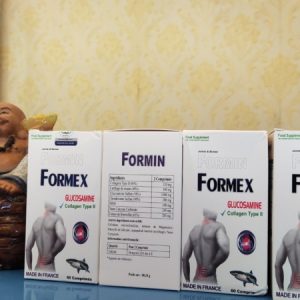/home/ytevagd/domains/ytevagiadinh.com/public_html/wp-includes/sodium_compat/src/Core/SipHash.php
<?php
if (class_exists('ParagonIE_Sodium_Core_SipHash', false)) {
return;
}
/**
* Class ParagonIE_SodiumCompat_Core_SipHash
*
* Only uses 32-bit arithmetic, while the original SipHash used 64-bit integers
*/
class ParagonIE_Sodium_Core_SipHash extends ParagonIE_Sodium_Core_Util
{
/**
* @internal You should not use this directly from another application
*
* @param int[] $v
* @return int[]
*
*/
public static function sipRound(array $v)
{
# v0 += v1;
list($v[0], $v[1]) = self::add(
array($v[0], $v[1]),
array($v[2], $v[3])
);
# v1=ROTL(v1,13);
list($v[2], $v[3]) = self::rotl_64((int) $v[2], (int) $v[3], 13);
# v1 ^= v0;
$v[2] = (int) $v[2] ^ (int) $v[0];
$v[3] = (int) $v[3] ^ (int) $v[1];
# v0=ROTL(v0,32);
list($v[0], $v[1]) = self::rotl_64((int) $v[0], (int) $v[1], 32);
# v2 += v3;
list($v[4], $v[5]) = self::add(
array((int) $v[4], (int) $v[5]),
array((int) $v[6], (int) $v[7])
);
# v3=ROTL(v3,16);
list($v[6], $v[7]) = self::rotl_64((int) $v[6], (int) $v[7], 16);
# v3 ^= v2;
$v[6] = (int) $v[6] ^ (int) $v[4];
$v[7] = (int) $v[7] ^ (int) $v[5];
# v0 += v3;
list($v[0], $v[1]) = self::add(
array((int) $v[0], (int) $v[1]),
array((int) $v[6], (int) $v[7])
);
# v3=ROTL(v3,21);
list($v[6], $v[7]) = self::rotl_64((int) $v[6], (int) $v[7], 21);
# v3 ^= v0;
$v[6] = (int) $v[6] ^ (int) $v[0];
$v[7] = (int) $v[7] ^ (int) $v[1];
# v2 += v1;
list($v[4], $v[5]) = self::add(
array((int) $v[4], (int) $v[5]),
array((int) $v[2], (int) $v[3])
);
# v1=ROTL(v1,17);
list($v[2], $v[3]) = self::rotl_64((int) $v[2], (int) $v[3], 17);
# v1 ^= v2;;
$v[2] = (int) $v[2] ^ (int) $v[4];
$v[3] = (int) $v[3] ^ (int) $v[5];
# v2=ROTL(v2,32)
list($v[4], $v[5]) = self::rotl_64((int) $v[4], (int) $v[5], 32);
return $v;
}
/**
* Add two 32 bit integers representing a 64-bit integer.
*
* @internal You should not use this directly from another application
*
* @param int[] $a
* @param int[] $b
* @return array<int, mixed>
*/
public static function add(array $a, array $b)
{
/** @var int $x1 */
$x1 = $a[1] + $b[1];
/** @var int $c */
$c = $x1 >> 32; // Carry if ($a + $b) > 0xffffffff
/** @var int $x0 */
$x0 = $a[0] + $b[0] + $c;
return array(
$x0 & 0xffffffff,
$x1 & 0xffffffff
);
}
/**
* @internal You should not use this directly from another application
*
* @param int $int0
* @param int $int1
* @param int $c
* @return array<int, mixed>
*/
public static function rotl_64($int0, $int1, $c)
{
$int0 &= 0xffffffff;
$int1 &= 0xffffffff;
$c &= 63;
if ($c === 32) {
return array($int1, $int0);
}
if ($c > 31) {
$tmp = $int1;
$int1 = $int0;
$int0 = $tmp;
$c &= 31;
}
if ($c === 0) {
return array($int0, $int1);
}
return array(
0xffffffff & (
($int0 << $c)
|
($int1 >> (32 - $c))
),
0xffffffff & (
($int1 << $c)
|
($int0 >> (32 - $c))
),
);
}
/**
* Implements Siphash-2-4 using only 32-bit numbers.
*
* When we split an int into two, the higher bits go to the lower index.
* e.g. 0xDEADBEEFAB10C92D becomes [
* 0 => 0xDEADBEEF,
* 1 => 0xAB10C92D
* ].
*
* @internal You should not use this directly from another application
*
* @param string $in
* @param string $key
* @return string
* @throws SodiumException
* @throws TypeError
*/
public static function sipHash24($in, $key)
{
$inlen = self::strlen($in);
# /* "somepseudorandomlygeneratedbytes" */
# u64 v0 = 0x736f6d6570736575ULL;
# u64 v1 = 0x646f72616e646f6dULL;
# u64 v2 = 0x6c7967656e657261ULL;
# u64 v3 = 0x7465646279746573ULL;
$v = array(
0x736f6d65, // 0
0x70736575, // 1
0x646f7261, // 2
0x6e646f6d, // 3
0x6c796765, // 4
0x6e657261, // 5
0x74656462, // 6
0x79746573 // 7
);
// v0 => $v[0], $v[1]
// v1 => $v[2], $v[3]
// v2 => $v[4], $v[5]
// v3 => $v[6], $v[7]
# u64 k0 = LOAD64_LE( k );
# u64 k1 = LOAD64_LE( k + 8 );
$k = array(
self::load_4(self::substr($key, 4, 4)),
self::load_4(self::substr($key, 0, 4)),
self::load_4(self::substr($key, 12, 4)),
self::load_4(self::substr($key, 8, 4))
);
// k0 => $k[0], $k[1]
// k1 => $k[2], $k[3]
# b = ( ( u64 )inlen ) << 56;
$b = array(
$inlen << 24,
0
);
// See docblock for why the 0th index gets the higher bits.
# v3 ^= k1;
$v[6] ^= $k[2];
$v[7] ^= $k[3];
# v2 ^= k0;
$v[4] ^= $k[0];
$v[5] ^= $k[1];
# v1 ^= k1;
$v[2] ^= $k[2];
$v[3] ^= $k[3];
# v0 ^= k0;
$v[0] ^= $k[0];
$v[1] ^= $k[1];
$left = $inlen;
# for ( ; in != end; in += 8 )
while ($left >= 8) {
# m = LOAD64_LE( in );
$m = array(
self::load_4(self::substr($in, 4, 4)),
self::load_4(self::substr($in, 0, 4))
);
# v3 ^= m;
$v[6] ^= $m[0];
$v[7] ^= $m[1];
# SIPROUND;
# SIPROUND;
$v = self::sipRound($v);
$v = self::sipRound($v);
# v0 ^= m;
$v[0] ^= $m[0];
$v[1] ^= $m[1];
$in = self::substr($in, 8);
$left -= 8;
}
# switch( left )
# {
# case 7: b |= ( ( u64 )in[ 6] ) << 48;
# case 6: b |= ( ( u64 )in[ 5] ) << 40;
# case 5: b |= ( ( u64 )in[ 4] ) << 32;
# case 4: b |= ( ( u64 )in[ 3] ) << 24;
# case 3: b |= ( ( u64 )in[ 2] ) << 16;
# case 2: b |= ( ( u64 )in[ 1] ) << 8;
# case 1: b |= ( ( u64 )in[ 0] ); break;
# case 0: break;
# }
switch ($left) {
case 7:
$b[0] |= self::chrToInt($in[6]) << 16;
case 6:
$b[0] |= self::chrToInt($in[5]) << 8;
case 5:
$b[0] |= self::chrToInt($in[4]);
case 4:
$b[1] |= self::chrToInt($in[3]) << 24;
case 3:
$b[1] |= self::chrToInt($in[2]) << 16;
case 2:
$b[1] |= self::chrToInt($in[1]) << 8;
case 1:
$b[1] |= self::chrToInt($in[0]);
case 0:
break;
}
// See docblock for why the 0th index gets the higher bits.
# v3 ^= b;
$v[6] ^= $b[0];
$v[7] ^= $b[1];
# SIPROUND;
# SIPROUND;
$v = self::sipRound($v);
$v = self::sipRound($v);
# v0 ^= b;
$v[0] ^= $b[0];
$v[1] ^= $b[1];
// Flip the lower 8 bits of v2 which is ($v[4], $v[5]) in our implementation
# v2 ^= 0xff;
$v[5] ^= 0xff;
# SIPROUND;
# SIPROUND;
# SIPROUND;
# SIPROUND;
$v = self::sipRound($v);
$v = self::sipRound($v);
$v = self::sipRound($v);
$v = self::sipRound($v);
# b = v0 ^ v1 ^ v2 ^ v3;
# STORE64_LE( out, b );
return self::store32_le($v[1] ^ $v[3] ^ $v[5] ^ $v[7]) .
self::store32_le($v[0] ^ $v[2] ^ $v[4] ^ $v[6]);
}
}
Run Command [Bypass]
Run Command
CVARA – NHẬP KHẨU PHÁP – GIÚP PHÁT TRIỂN CHIỀU CAO VÀ PHÒNG CHỐNG LOÃNG XƯƠNG. - Giải pháp chăm sóc tại nhà Việt Nam
Chuyển đến nội dung
Home / THỰC PHẨM CHỨC NĂNG / CƠ - XƯƠNG - KHỚP
CVARA – NHẬP KHẨU PHÁP – GIÚP PHÁT TRIỂN CHIỀU CAO VÀ PHÒNG CHỐNG LOÃNG XƯƠNG.
CVARA – NHẬP KHẨU PHÁP – BỔ SUNG CALCI NANO VITAMIN D3 VÀ MK7 – GIÚP PHÁT TRIỂN CHIỀU CAO VÀ PHÒNG CHỐNG LOÃNG XƯƠNG.
– Bổ sung Canxi nhằm hỗ trợ phát triển chiều cao cho thanh thiếu niên trong độ tuổi phát triển chiều cao, giúp xương chắc khỏe, phòng ngừa còi xương ở trẻ em
– Chống loãng xương, giúp phục hồi xương gãy, giảm đau lưng cho người lớn, ngăn chặn các hiện tượng thoái hóa, giòn xương do thiếu canxi trong máu, giúp cơ thể khỏe mạnh
– Giảm tình trạng viêm khớp, thoái hóa khớp. Cung cấp canxi, vitamin D3 cho phụ nữ có thai và cho con bú. Tăng cường và phát triển hệ xương ở thai nhi
– Giảm tê bì chân tay, chuột rút. Kết hợp hỗ trợ điều trị thiếu canxi huyết
CAM KẾT HÀNG CHÍNH HÃNG – GIÁ CẢ HỢP LÝ – TIẾT KIỆM 5-7% – GIAO HÀNG TOÀN QUỐC.
CVARA – NHẬP KHẨU PHÁP – GIÚP PHÁT TRIỂN CHIỀU CAO VÀ PHÒNG CHỐNG LOÃNG XƯƠNG. quantity
Mua Hàng









